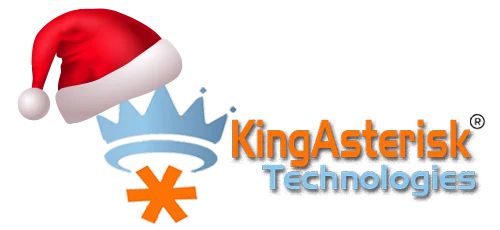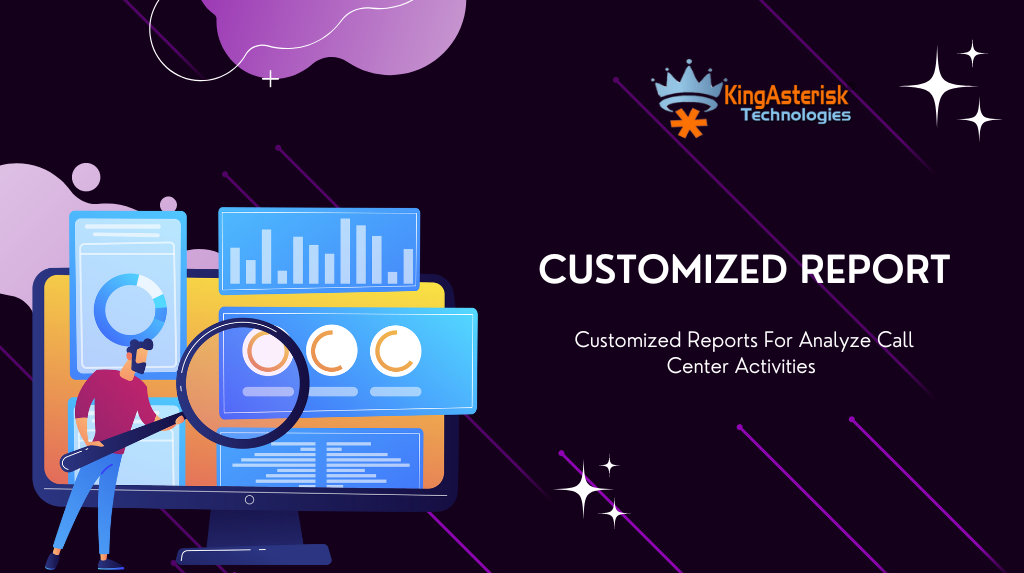You will need to use the wealth of digital data at your fingertips to improve the overall effectiveness, efficiency, productivity and intelligence of your call center. The best way to do this is to use digital dashboards and modern online reporting tools.
Before we delve into the benefits, features, and functions of the call center reporting process, it’s important to focus (and stay that way) on the role of customer service reporting in developing innovative business strategies that will transform your service. levels from ordinary to extraordinary.
But before going any further, let’s define the basics, What is Call Center Reporting?
What Is Call Centre Reporting?
Call center reporting is defined as the process of breaking down key insights from contact center systems into custom reports. This will usually include your ACD system.
Your ACD system will automatically generate historical and real-time reports.
The process of tracking relevant contact center data to identify insights that lead to improved customer support and increased satisfaction through professional reports and interactive dashboards.
Your ACD (Automatic Call Distributor) system will automatically generate historical and real-time reports. This includes agent activity reports, agent status reports and call details – just to name a few.
This report will contain a lot of great data that you can turn into graphs and charts to identify key trends. There are reporting tools that will do this automatically.
However, today’s ACD systems don’t just provide you with basic reports – they will be the home for most reporting.
For example, your CRM system will provide you with excellent sales reports. So don’t limit your reporting to just your ACD system, look at the other metrics a contact center system can provide.
By using call center analytics, you will significantly improve the performance of your contact center and give your business a competitive advantage.
Features of Call Center Customized Reports:
Call to Listen Live
Supervisors can listen in on calls while agents are talking to customers. This allows real-time assessment of call quality.
Change of Circumstances
The monitor can check the number and duration of incoming and outgoing calls. Track agent status to help maximize time.
Real Time Update
Send phone details, messages or links from the control panel.
Customize Your Dashboard
View key statistics that are important to your industry. Drag and drop to create your custom report.
Campaign Tracking
Get call details in instant summary reports so you can track campaigns.
Benefits of Call Center Dashboards and Reports
As you can gather, contact center dashboards are essential to the health, efficiency, and success of your business’s customer service.
To understand the power of this call center customer service focused report, consider the benefits of an interactive call center dashboard:
- Customer-based analytics reporting can help streamline your customer-facing relationships by helping to improve overall productivity and improve complaint response and resolution rates.
- The information provided by your communications dashboard will help you identify service inefficiencies, streamline operations, reduce costs, improve service, and increase employee motivation levels.
- Agent metrics will help you support those who need help in specific areas of their role, helping you engage your employees through a more effective approach.
- These actions will lead to a happier workforce, in turn, enhancing the level of support you give to your customers.
- With reliable real-time data analytics, you can spot trends and address any issues that arise, replacing them before they become more damaging and time-consuming problems.
- As data is presented interactively, intuitively and visually, important information can be easily viewed, digested, analyzed and shared, saving time and facilitating cross-industry collaboration.
- In addition, the fully customizable nature of contact center technology means you can customize your KPI dashboard to your specific needs or preferences, making your data-driven insights even more embedded across the board.
- When considering how to build a contact center dashboard, communication is key.
- Because modern customer service performance dashboards are accessible via multiple media, including mobile, customer service managers and support agents can view and analyze key metrics at the swipe of a screen or the click of a button 24/7, just by making it modern. mobile dashboard – improved communication and improved organizational transparency in one smart data-driven dashboard.
Real Time Reports
Agent activity reports are usually historical and contain a lot of information related to the daily “output” of the advisor. This is sometimes known as the agent’s detailed report.
The report provides a summary of individual activities and includes statistics such as:
– This report reports whether a contact center agent is answering the phone, busy, or on a break.
– Most contact centers have certain work limits, such as overtime or overtime.
– Agent activity reports also provide historical data collected for a day, week, or month.
This report will include metrics like:
– Incoming call volumes
– The average handling time for calls
– Agent idle time
– Number of calls handled
– The total handle time for those calls
– Average handling time
– Shortest and longest handle time
Agent Reports
The Agent Availability Report is a real-time report. Along with displaying the ACD status, it provides individual agent names and user credentials. Although the activity report provides a synopsis of the activities performed by the agent, it usually does not analyze these metrics for a deeper understanding.
In other words, it is difficult to tell whether the agent’s performance is “good” or “bad” based on just one performance report.
Instead, contact center performance reports provide more color, highlighting potential successes and shortcomings.
This report will include metrics like:
– Speed of answer
– Percentage of unanswered calls
– First call resolution
Agents will typically be in one of a number of ACD states. These include:
– Signed out
– Available
– Busy (Handling a contact)
– Wrapping up
– Unavailable / Idle Break
In addition, the report will show how long the lead agent has worked in each situation – making it clear that the consultant will need additional support.
You can see an example of an agent availability report below:
Historical agent availability reports can also be accessed to see when agents checked in and out and how long they were in each country. This allows for compliance with workplace calculations.
By tracking how long agents spend in each state, we can check whether agents are playing tricks like taking tactical shower breaks or extending their rotation time to avoid work.
Inbound and Outbound Calling Reports
This is an important one for all of the workforce planners, as this report takes you through inbound and outbound call statistics, across various time periods.
This includes:
– Months of the year
– Days of the week
– Hours of the day
Once you start this charting, you will see key trends and seasonal statistics. This is the bread and butter of contact center forecasting.
After each call, the agent enters the callback code into the CRM, indicating why the customer called. The disposition report aggregates these keys, allowing contact center managers to assess the most prominent demand drivers.
Some reports break down different CX metrics into each group so that the contact center can prioritize areas for improvement.
This report will include information like:
– The reason why customers call
– Call outcome metrics
In addition, inbound and outbound call summary reports will also allow you to split contact volumes between different agents and groups, which can be useful when reviewing your resource planning success across different departments within the contact center.
Time Clock Reports
A flexible and fast reporting system that can generate up-to-date reports suitable for many purposes.
Some are useful for sharing your salary, others are useful for staff, and others can be used by department heads and managers to track and understand employee expenses.
Some reports are for reference purposes, such as employee badge number reports and job number reports.
Reports can be run with report headers and customizable labels for a date range, shift, department or a number of employees.
Almost every part of every report can be customized. For example, you can have your own headers and report headers, and you can define what information is shown in the employee’s salary information.
This is useful for blocking normal working time or sick time/vacation time if they are not used in your company. Times in the report can be displayed either in minutes or in decimals.
So a time of 1 hour 30 minutes can be displayed as 1:30 or 1.5 hours.
Customization of Reports:
When you have access to customizable reports, you can turn your data into action.
Customized reports give you:
– Clear and visible metrics to empower and engage your agents.
– A grip on the metrics impacting your customer experience, like CSAT, average time on hold, and first call resolution.
– Data to inform decisions for a better AX and CX.
– A source of truth to prove contact center ROI to your executives, so you win the budget you need for your next big project.
With reports tailored to your specific business needs, all stakeholders get the info that matters to them most.
Reporting doesn’t have to be a hassle. And with King Asterisk Technologies, it’s not.
Conclusion
Call center reports include a collection of key metrics and key insights from contact center systems such as ACD systems.
This report, provided by Kingasterisk Technologies, provides critical information to better inform your forecasting models, scheduling plans, and queuing strategies—just to name a few key uses.
In fact, there is a lot of information that can be provided that can be simplified, evaluated, and evaluated to bring real value to the contact center.





